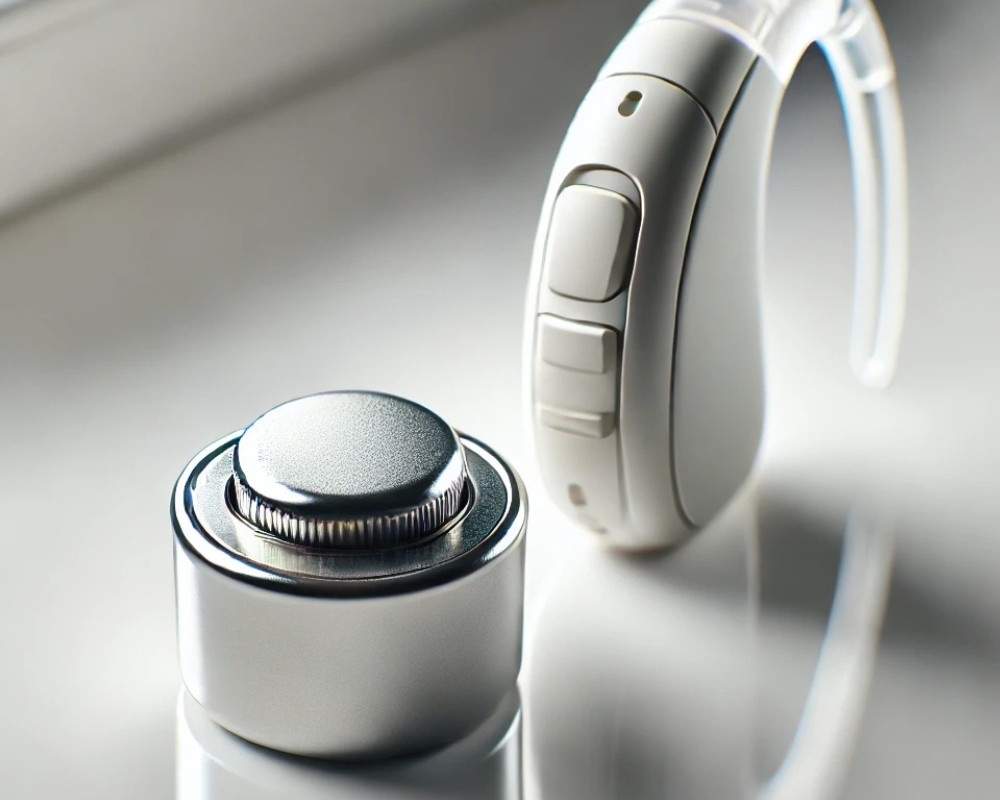
Which cell keeps your hearing aids running?
Hearing aids are an essential tool for many individuals with hearing loss, helping them reconnect with the world and lead an active life. These tiny devices amplify sound, allowing users to engage in conversations, enjoy music, and navigate daily activities with ease. For many, hearing aids are a life-changing solution, offering independence and improving overall quality of life. However, have you ever stopped to think about what keeps these incredible devices powered?
The answer might surprise you. Unlike the rechargeable batteries found in most of our everyday gadgets, traditional hearing aids rely on a specific type of non-rechargeable cell: the mercury cell. Which cell keeps your hearing aids running is a question that has fascinated many. The mercury cell is chosen because it provides a stable voltage, lasts longer than other types of batteries, and is compact enough to fit in the small, discreet hearing aids many people rely on daily.
Why the Cell Used in Hearing Aids Matters
The cell used in hearing aids isn’t just any regular battery. The right power source ensures that your device works efficiently over long periods and provides clear and consistent sound. The importance of choosing the right cell lies in several factors:
- Long Lifespan: The cell used in hearing aids typically lasts much longer than standard batteries. This is especially beneficial for users who find frequent battery replacements challenging. Many hearing aids powered by mercury cells can last between one to three years, depending on usage.
- Stable Voltage: Unlike regular batteries that can lose charge and cause performance issues, cells used in hearing aids like mercury cells provide a stable voltage throughout their lifespan. This consistency ensures that your hearing aid works at optimal performance without any sudden drop in sound quality.
- Compact Size: Hearing aids are worn in or behind the ear. The smaller size of mercury and zinc-air cells make them perfect for these tiny devices, ensuring they fit discreetly while delivering powerful performance.
- Low Power Consumption: Hearing aids require only a small amount of power to function particularly mercury and zinc-air, and are designed to deliver that precise amount of energy without draining too quickly, making them long-lasting and efficient.
Exploring the Chemistry of the Cells Used in Hearing Aids
Different types of cells are used to power hearing aids, each with its own benefits and drawbacks. Let’s focus on the two main types of cells typically found in hearing aids: mercury and zinc-air cells.
- Mercury Cells: Mercury cells have historically been a popular choice for powering hearing aids due to their impressive durability and consistent power delivery.
- Anode: Made from a mixture of zinc and mercury. The zinc gradually dissolves during operation, creating the electrical flow needed to power the hearing aid.
- Cathode: Composed of mercuric oxide, this is where the electrons are accepted, helping produce the electricity that powers your hearing aid.
- Electrolyte: A paste that helps facilitate the flow of ions between the anode and cathode, further aiding in power production.
Despite their advantages, mercury cells are being phased out due to environmental concerns. Mercury is a hazardous material, and improper disposal can lead to soil and water contamination.
Zinc-Air Cells:
Zinc-air batteries have become the preferred choice in many modern hearing aids, especially as more eco-friendly alternatives. These cells use zinc as an anode and oxygen from the air as the cathode, creating an efficient, stable, and eco-friendly power source.
Zinc-air cells have several advantages:
- They are lightweight and compact, making them ideal for hearing aids.
- They offer a steady power supply throughout their lifespan, ensuring that your device performs reliably.
- They are more environmentally friendly, as they don’t contain mercury and can be disposed of safely.
Choosing the Right Battery
When selecting a battery type, consider factors like the hearing aid model, battery size, lifespan, and personal preferences such as ease of replacement or recharging options. For instance:
- Small-in-the-ear (ITE) and CIC hearing aids usually use smaller zinc-air batteries (like size 10 or 312).
- BTE hearing aids and RIC hearing aids are often compatible with larger zinc-air or rechargeable lithium-ion batteries.
Each type of battery has distinct advantages that cater to specific needs and lifestyles.
Environmental Impact and Eco-Friendly Alternatives
While mercury cells have long been used to power hearing aids, their environmental impact is a growing concern. Mercury is a hazardous substance that can contaminate soil and water when disposed of improperly, posing risks to human and animal health.
Due to these environmental issues, many countries have introduced regulations to limit the use of mercury in products, including hearing aids. As a result, the production of mercury cells has decreased in many regions, though they may still be available in some markets.
Thankfully, advancements in battery technology have led to more eco-friendly options:
- Zinc-Air Batteries: These rechargeable batteries are a sustainable alternative, using zinc and air to create power. They eliminate mercury and reduce environmental impact but require regular charging, which may be inconvenient for some users.
- Lithium-Ion Batteries: Similar to the batteries used in smartphones, these rechargeable batteries have a long lifespan and offer consistent performance. Though they come with a higher upfront cost, they can save money over time and are more environmentally friendly.
As technology progresses, these greener options offer hearing aid users a reliable and eco-conscious power source.
Also Read: How to put in Hearing Aids
Choosing the Right Power Source for Your Hearing Aid
Selecting the right power source for your hearing aid is essential for maintaining its performance and ensuring it suits your lifestyle. Your audiologist will help guide you through the available options, but understanding the key factors will empower you to make an informed decision.
- Lifestyle: Consider how often you use your hearing aid. If you need a power source that lasts longer between changes, a mercury cell might be the right choice. These cells typically last 1-3 years, reducing the frequency of replacements. However, if you’re concerned about environmental impact, rechargeable options like zinc-air or lithium-ion batteries offer a greener solution.
- Dexterity: Handling small batteries can be difficult for individuals with limited mobility, such as those with arthritis. In such cases, lithium-ion or mercury cells can be advantageous since they need fewer replacements than zinc-air batteries, which require regular charging every few days to a week.
- Hearing Needs: More sophisticated hearing aids with advanced features may consume more power. Your audiologist can help determine which cell used in hearing aids will best suit your device’s energy demands and your hearing needs.
- Budget and Cost of Hearing Aids: The cost of hearing aids can vary significantly depending on the model and the battery used. Lithium-ion batteries are typically more expensive upfront, but they offer long-term savings because they eliminate the need for frequent battery replacements. Mercury and zinc-air batteries are generally less costly initially, but their need for frequent changes may increase the device’s overall lifetime cost.
- Environmental Considerations: Mercury cells can be hazardous if disposed of incorrectly, contributing to environmental pollution. Rechargeable batteries like zinc-air and lithium-ion offer more sustainable alternatives, reducing waste and environmental harm over time.
Ultimately, the best power source for your hearing aid will depend on your lifestyle, dexterity, hearing needs, budget, and environmental preferences. Discussing these factors with your audiologist can help you make the right decision, ensuring your hearing aid performs optimally and fits your unique needs.
Conclusion
While the future of hearing aid batteries undoubtedly lies with environmentally friendly alternatives like zinc-air and lithium-ion options, we shouldn’t diminish mercury cells’ role. Their long lifespan and compact size revolutionized hearing aids, allowing people with hearing loss to experience a newfound connection with the world around them.
However, mercury’s environmental impact necessitates a shift towards sustainable solutions. Thankfully, advancements in battery technology have paved the way for powerful and eco-friendly options. As these technologies evolve, we can expect even more user-friendly and environmentally responsible power sources to emerge, empowering individuals with hearing loss to enjoy the benefits of clear sound while minimizing their environmental footprint.
Frequently Asked Questions
Hearing aids typically use zinc-air cells, which are favoured for their stable voltage and compact size, making them ideal for small devices.
Yes, modern hearing aids often utilize rechargeable cells such as lithium-ion and silver-zinc batteries, offering users the convenience of not having to frequently replace disposable batteries.
- Zinc-air batteries: a rechargeable option utilizing zinc and air (oxygen). It is more sustainable but requires regular charging.
- Lithium-ion batteries: Similar to smartphone batteries, these offer long life and are rechargeable. However, they might have a slightly higher initial cost.
Factors to consider include:
- Lifestyle: Long-life options like mercury (if available) or lithium-ion might suit those who prioritize minimal changes. Rechargeable batteries offer an eco-friendly option for those comfortable with a charging routine.
- Dexterity: Users with limited hand mobility might benefit from longer-lasting batteries like mercury or lithium-ion.
- Hearing needs: More sophisticated hearing aids might drain batteries faster. Discuss your needs with your audiologist to ensure compatibility.
- Budget: While lithium-ion batteries might have a higher upfront cost, long-term savings due to fewer replacements can be significant.
- Environmental considerations: Opt for rechargeable options like zinc-air or lithium-ion for a greener choice.
Your audiologist is a valuable resource. Discuss your needs and preferences to find the power source that best suits your hearing aid and lifestyle. They can guide you through the available options and address any questions.
Dr. Harshi, is an accomplished Audiologist with extensive expertise in treating individuals with hearing impairments.

